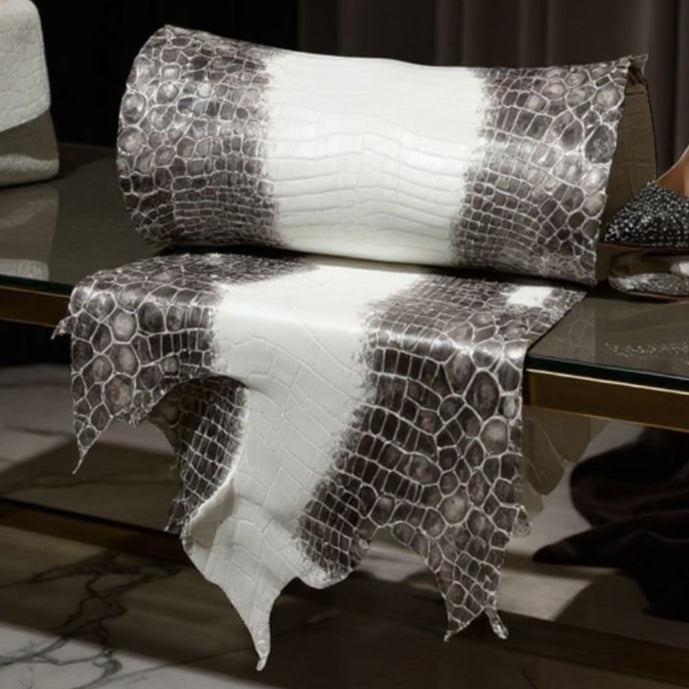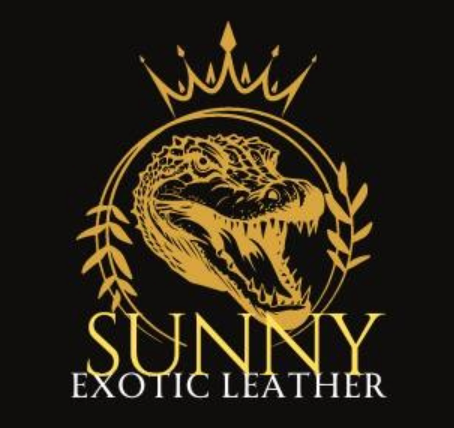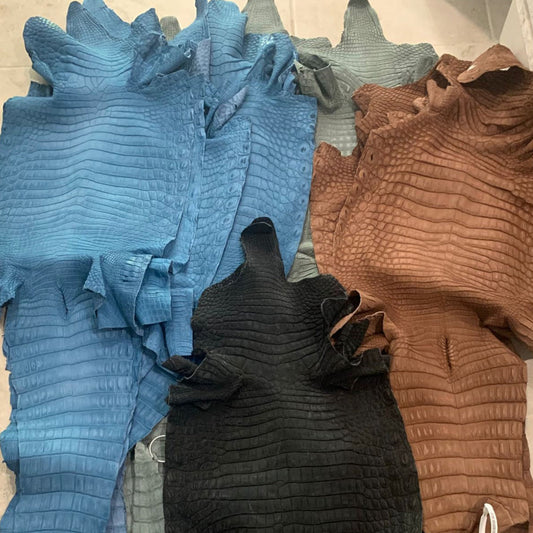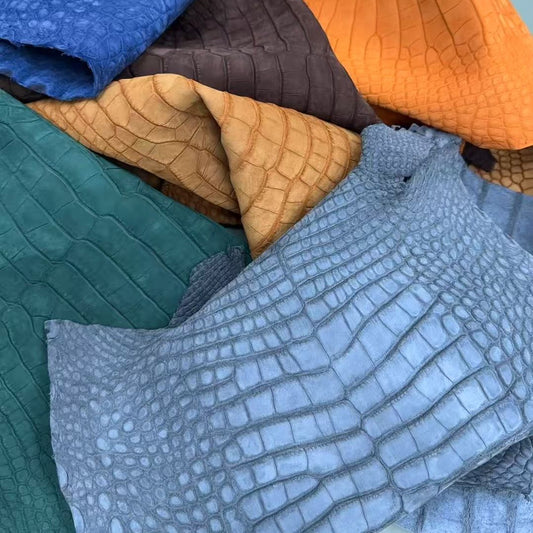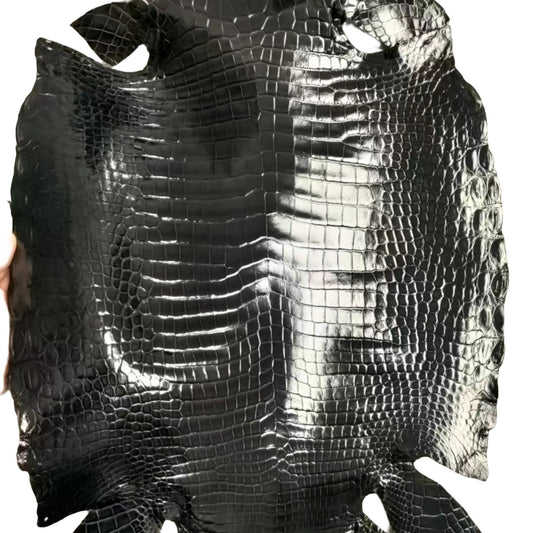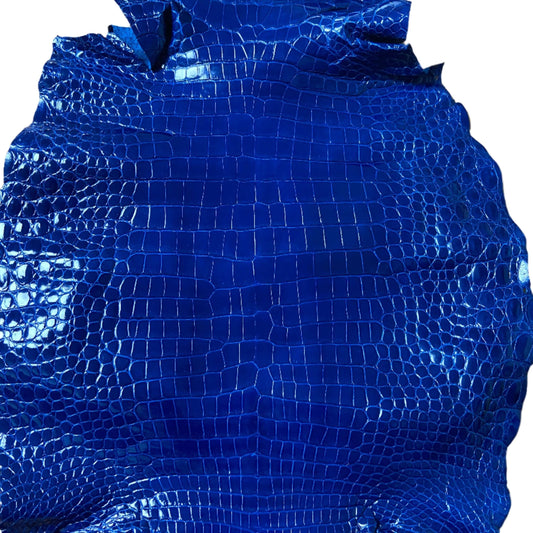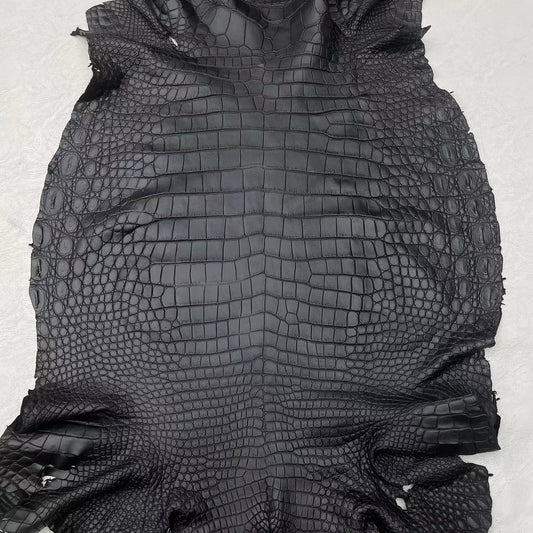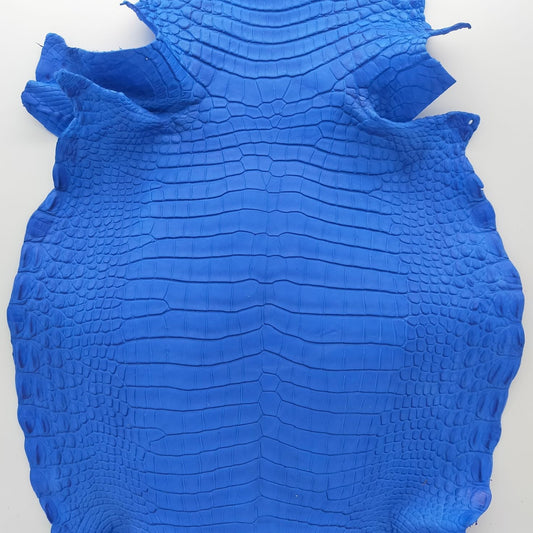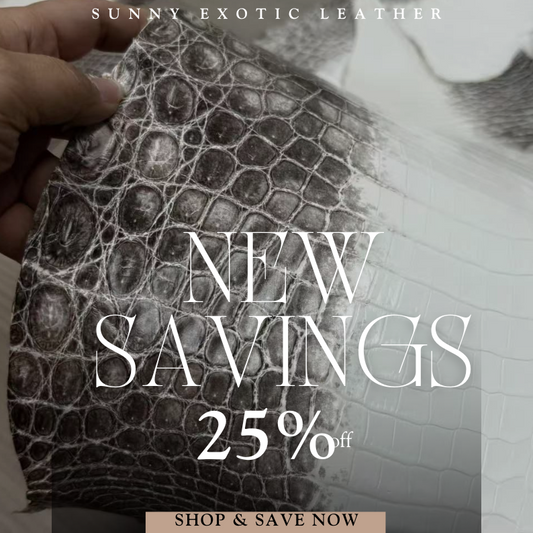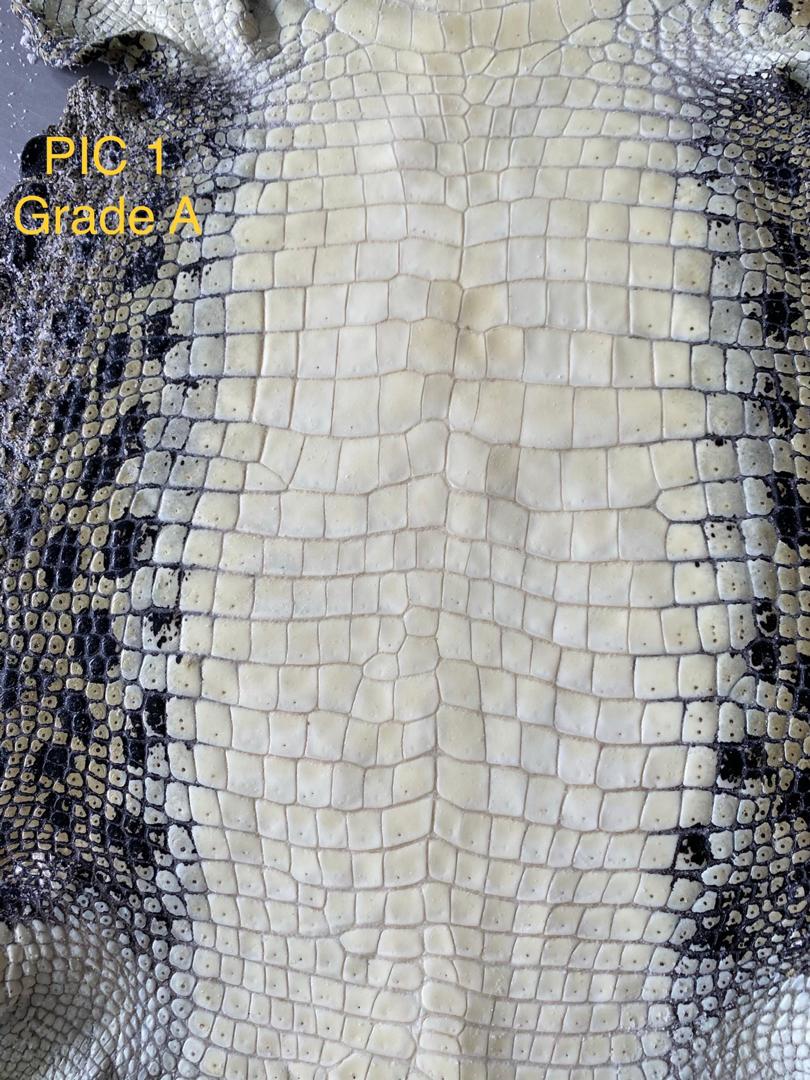
All You Need to Know About Exotic Crocodile Leather
Share
About Crocodile Leather
Crocodile leather – commonly referred to as skins, hides, or croc, is the tanned and processed skin of one of several species of crocodile from around the world. It is considered an exotic leather due to its relative rarity and the level of craftsmanship required to produce a finished crocodile hide for production uses such as handbags, apparel, furniture, and upholstery.
The below guide aims to instruct those interested and/or already involved in the production of goods with luxury leathers by providing the facts and information about crocodiles, their hides, and applications for handbags, apparel, furniture, upholstery, and other items.
By the end of this guide, you should have a basic understanding of the species, its legalities, working with crocodile leather as well as its specifications and measurements.
Crocodile Leather – The Basics
What is the appeal of crocodile leather?
Crocodile leather is lauded as one of the most valuable leathers and is found in the fashion lines of most top brads such as Vuitton, Gucci, Versace and Burberry. While crocodile leather may be “in” or “out” of the stream of fashion for a particular season, the actual goods rarely lose their value due to their timeless leater and craftsmanship.
As with all luxury goods, the scarcity of the leather is an important role in determining its value. By “scarcity” it isn’t just the limited supply, it is also the availability of farms or hunters, tanning facilities with the proper tools and knowledge to produce a finished crocodile hide, and limitations by the size of the skin. And, notwithstanding, the price of hides grows exponentially with the size of the hide.
Crocodiles are farmed or wild-caught, and both methods have factors that influence their scarcity:
For farmed crocodiles, the larger they become, the increase in food and the risks of their care grow exponentially. As a crocodile grows to full maturity, they can often consume more than twice the amount of food as the previous year. Crocodiles are, by nature, predators, and they also become increasingly more aggressive as they get older. Oftentimes, the larger crocodiles must be housed in their own pens and rooms. Here is the ratio:
20 – 24cm (1.0 years on the farm)
25-29cm (1.5 years on the farm)
30-34cm (2.0 years on the farm)
35-39cm (2.5 years on the farm)
40-44cm (3.0 years on the farm)
45cm up (3.5 years on the farm)
Wild caught crocodiles have a uniquely reciprocal problem: while feeding and care are not relevant, they are at greater risk in their natural environment of experiencing physical trauma where they develop scars and inconsistencies. A crocodile of 3 years or more without any scars on their hide is a rare find, indeed.
Finally, one more factor that influences the price of larger hides is the increased demand for using the larger skins. For instance, a design for a 16″ handbag will require a 40-44cm hide. A hide of this size will have come from a crocodile that has been raised or found to be at least 3 years old.
Where does it come from?
There are three species of crocodiles that are traded across the country, each with its own benefits:
- Freshwater Crocodile (Crocodylus novaeguineae) – Freshwater crocodiles from New Guinea are among the most sought after, highest quality leathers available. It is typically given a matte or glazed finish and the nature of the skins allow them to be skivved down until thin so they are pliable for garments.
- Saltwater Crocodile (Crocodylus porosus) – Saltwater crocodile from Australia are a rare commodity that are amongst the largest of all crocodiles. The extra large size of their hides make them great for uses where a larger skin is desired – such as wide handbag or briefcase panels, wall coverings and upholstery.
- Nile Crocodile (Crocodylus niloticus) – Nile crocodile hides are often preferred in leather production due to their size, strength, and availability across Africa. At full size, the Nile Crocodile is approximately 11.5 – 16 ft. long and will yield a finished hide between 28 – 35cm wide.
- *Caiman Crocodile (crocodilus fuscus) – Caiman crocodile is often sold as being “genuine crocodile”. While this is true to a degree, and we will not underestimate the appeal and demand of caiman goods for products, in the exotic leather trade, it is important to distinguish caiman from other species of crocodiles as it does not possess the same quality or value in luxury goods relative to the others. Caiman are considered an economical option due to their ubiquity and their smaller size and skins. For production uses, they are smaller hides with less pliability than their Freshwater, Saltwater or Nile cousins, which limits their use in crafting leather goods.
Applications and Uses for Crocodile Leather
Crocodile hides are used in many applications including luxury handbags, belts, wallets, apparel, upholstery for cars and furniture that give designs a luxurious custom appearance with strength and durability. Crocodile hides can be tanned in many custom textures and colors, leaving a designer many possibilities for adding luxury to new or existing items.
Crocodile Leather – Grading and Measurements
Crocodile leather hides come in two distinguishable cuts for leathercraft: a Back Cut, which is a rougher, more textured cut popular in trimming and applications where the scaly texture is desired, and a Belly Cut, which is a smoother and more pliable cut that is popular with upholstery and handbags.
How Crocodile Skins are Measured
To determine the overall value of a hide, crocodile skins are measured by the width across the largest portion across the body, at the second bone on each side. When purchasing a hide, you must consider that the measurements are for the overall hide and not a pattern width so you purchase a skin that is large enough for your intended use.

How Crocodile Skins are Graded
Crocodile skin grading is important in determining the price of a finished hide. A top quality hide, or “Grade A” hide, is reserved for the best skins. These skins will be free of defects across the majority, if not all, of the hide.
“Grade B” skins possess inconsistences and flaws, but there is usually a great portion of the hide that still has usable materials for smaller applications such as trims, wallets, hats, and more. Some defects that can affect the grading from A to B include:
1) Scar Tissue
2) Holes of any kind, including from errors in the tanning process.
3) Discoloration or uneven dye.
Crocodile Leather – Legalities
The legalities of importing and exporting crocodile leather differ throughout the world. In the United States, while crocodiles are not an indigenous species of the region like alligators, crocodile leather can be legally imported and exported as long as it is in compliance with CITES regulations. There are, however, some trade restrictions. For instance, Freshwater Siamese crocodile from Thailand, Vietnam or Cambodia are strictly outlawed for importation or for possession and sale in the United States regardless of filing the correct CITES paperwork. Sadly, regardless of this fact, there are sellers in these countries who still try to ship and sell this species to uninformed Americans who unintentionally commit criminal actions by attempting to import these skins.
Always know the source of your product. If you are in the United States, you need to be sure that the leather you are receiving is legal with CITES and Fish and Wildlife clearance.
About Crocodiles
Crocodile can loosely mean a number of species under the family Crocodylidae. They are commonly found in most regions of the world, living in rivers and wetlands. They are powerful carnivores that typically feed on other animals such as fish, mammals, and other reptiles. Crocodiles are one of the oldest living species on earth, over 200 millions years.
Their powerful tails help them move swiftly through the water and while they may look slow and sluggish when stationary, they are quick to attack their prey. Crocodiles have the most powerful jaws of any animal and sharp teeth for catching and eating; one common behavior of a Crocodile is “spinning” or “rolling” in the water after clamping down in order to pull off pieces of meat from their (often) unsuspecting prey. By instinct, they are one of the strongest and most powerful natural predators – a true King of the River that will attack and eat almost any creature that crosses its path.
